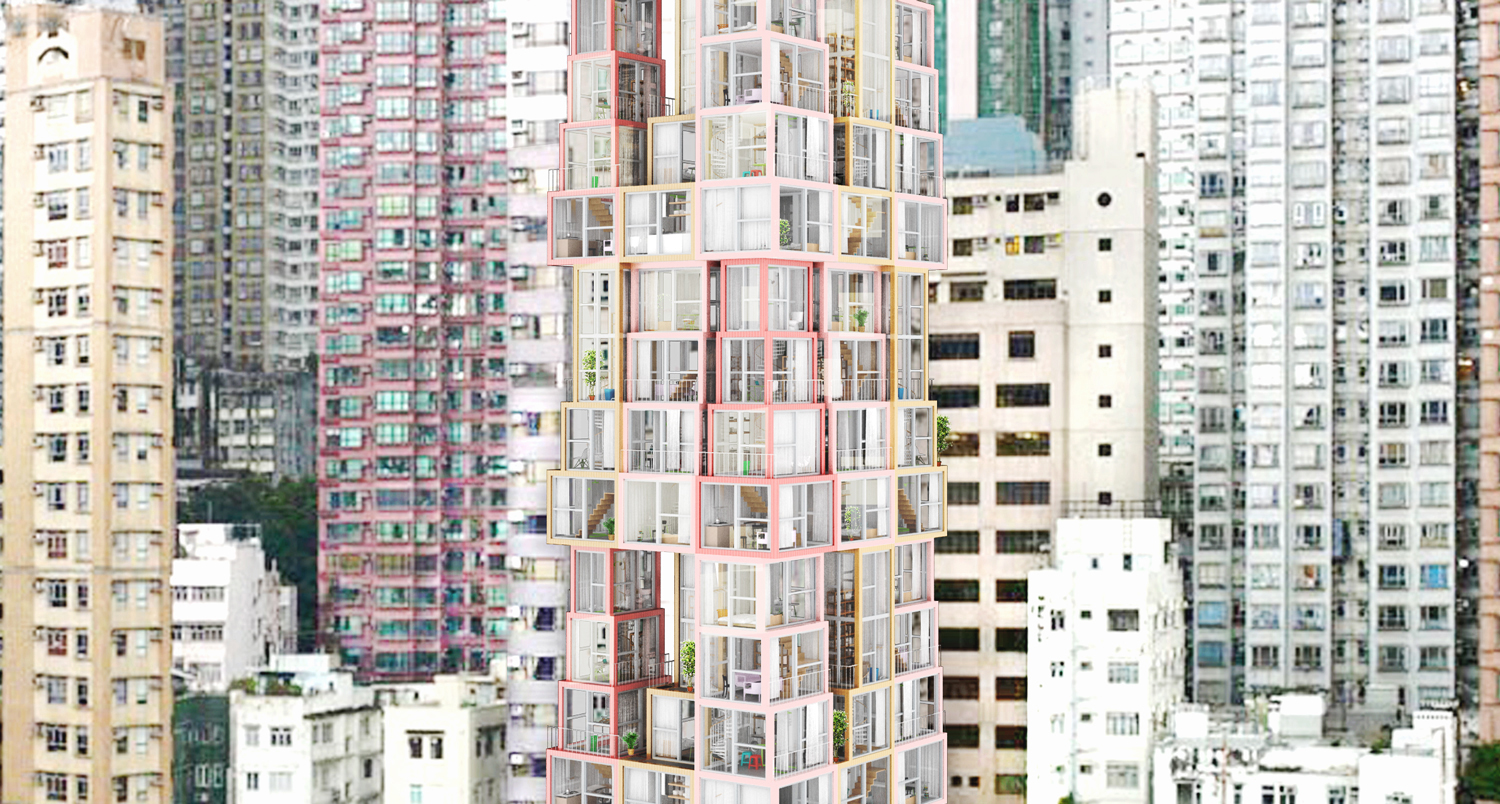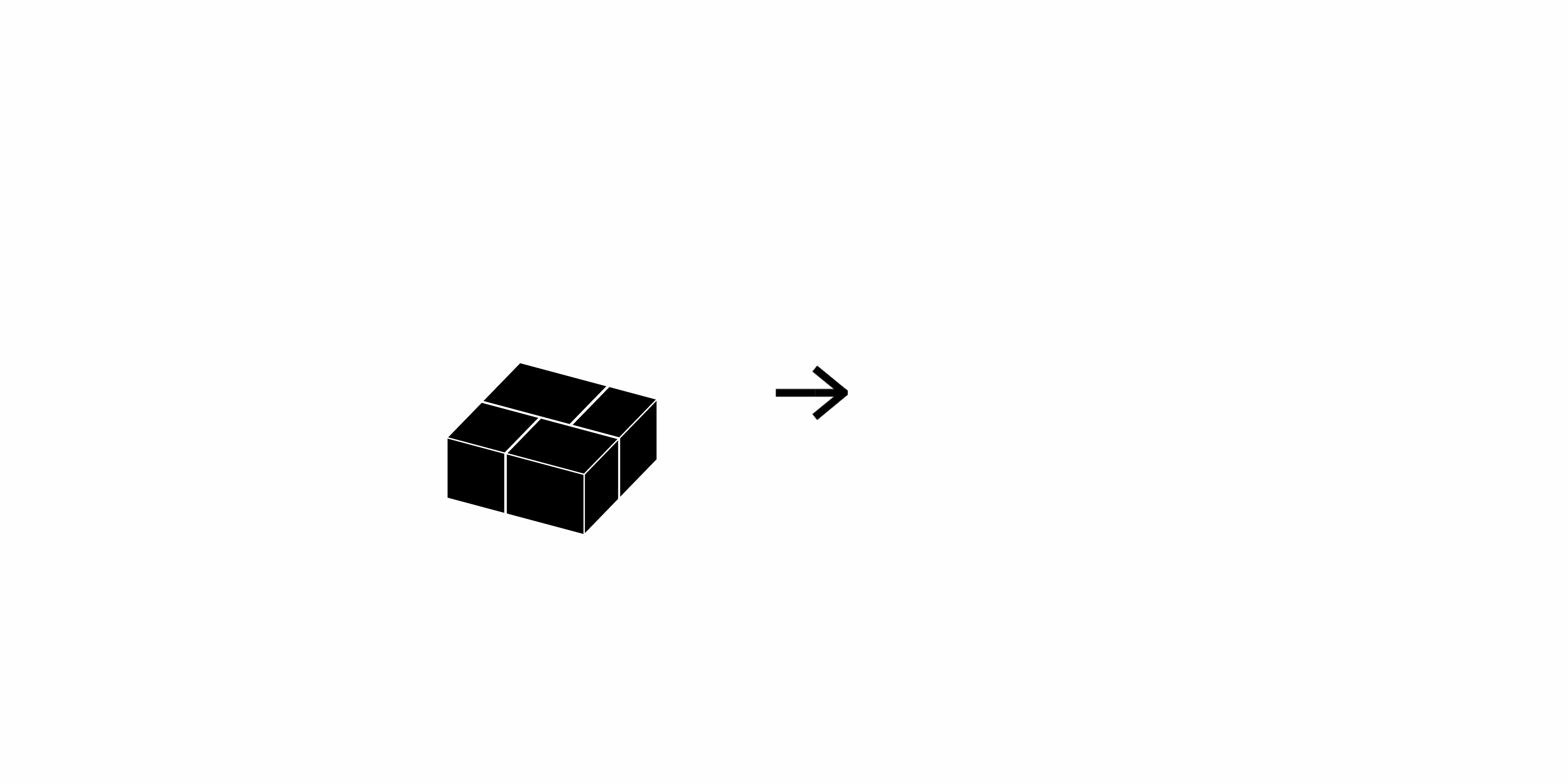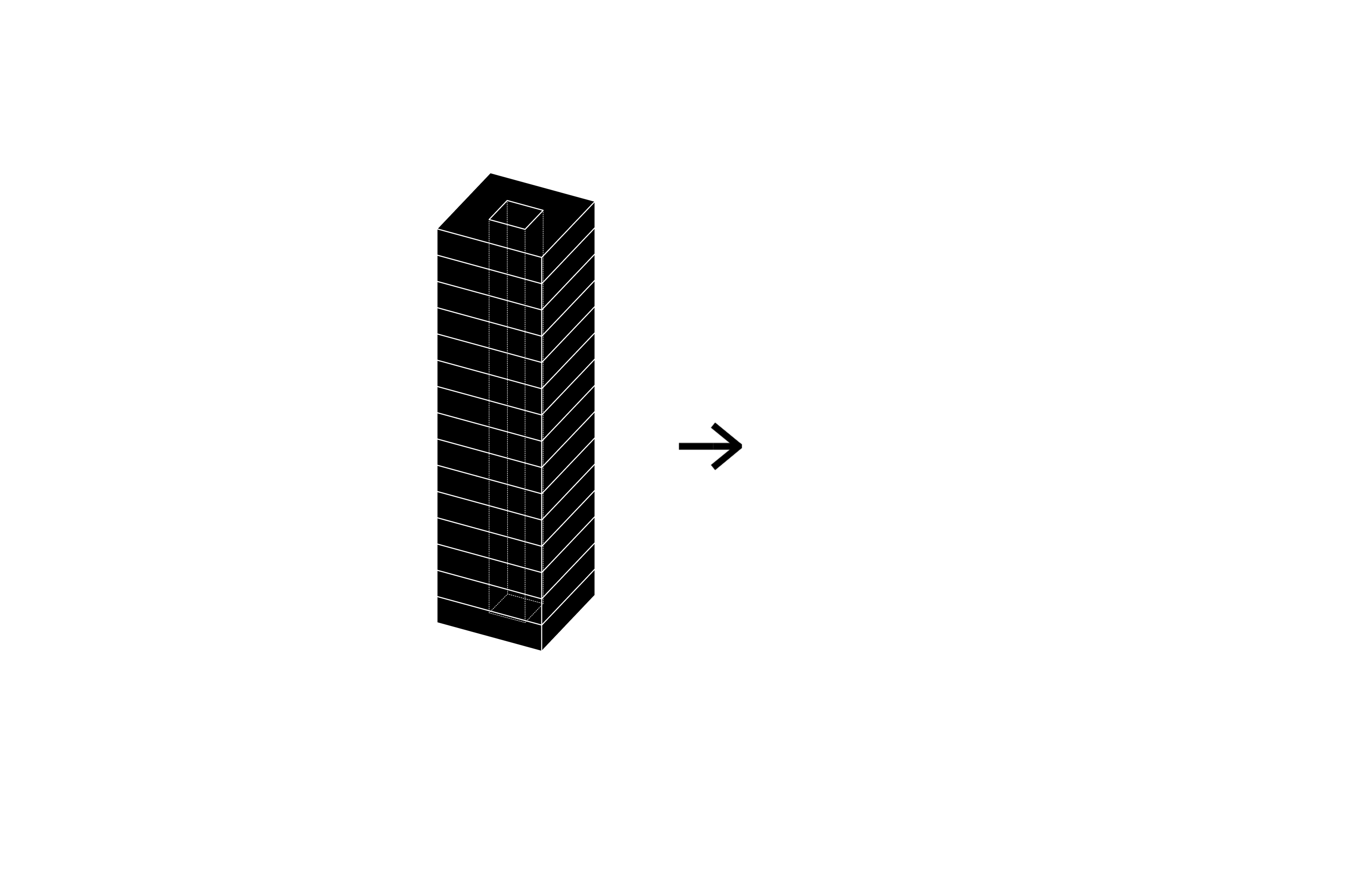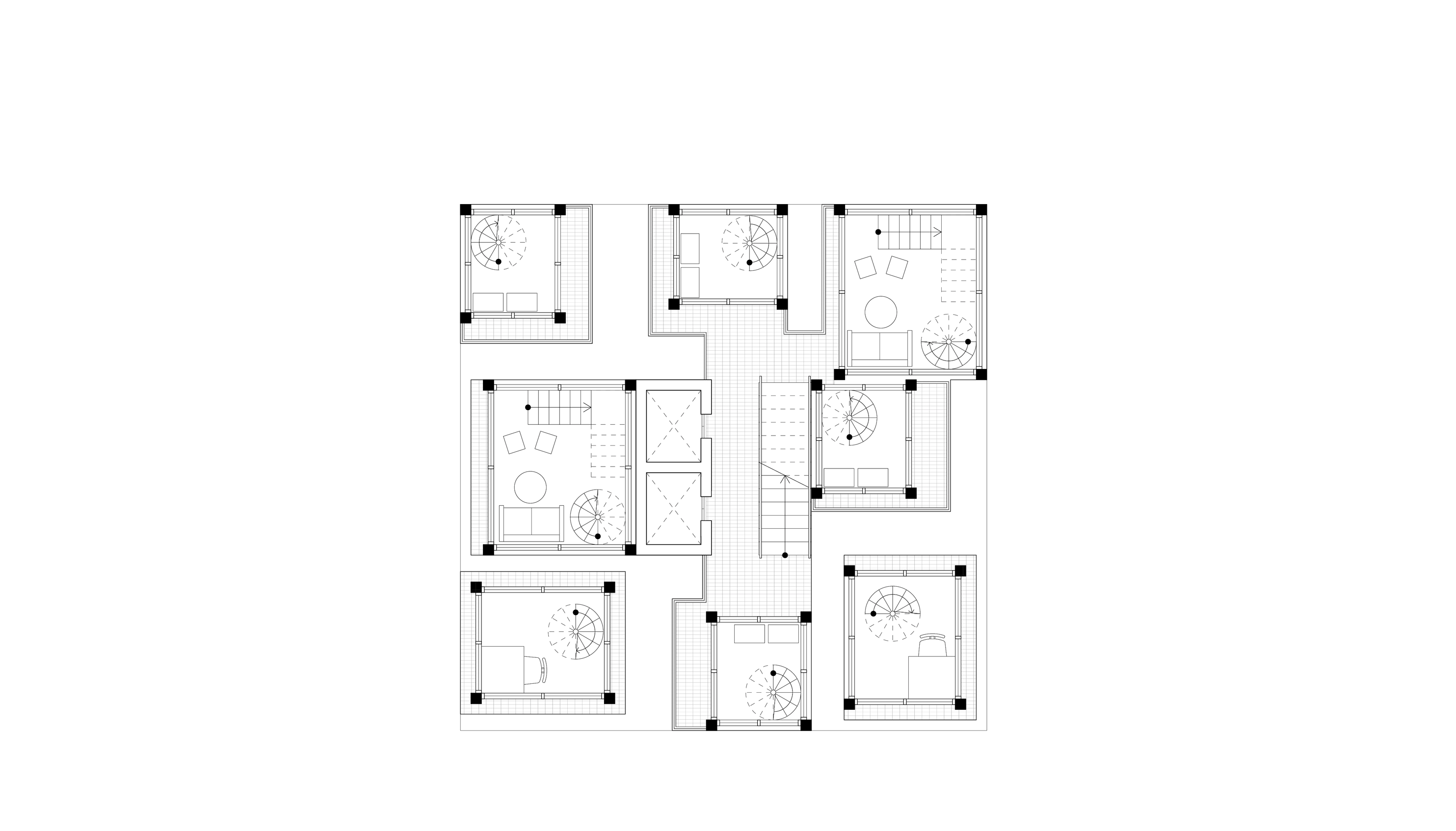Towers within a Tower is a new tower typology that utilizes verticality to the benefit of the community.
1/10

2/10
Project
Towers within a Tower
What
Multi-Family Housing
Where
Hong Kong
Size
Varies: units from 300 square feet and up
Status
Concept 2017
Awards
1st Prize Bee Breeders for Affordable Housing in Hong Kong, 2017
DRIVEN x DESIGN, Hong Kong Awards, Proposed Architecture, Silver Place, 2019
Team
Lap Chi Kwong, Alison Von Glinow, Kevin Lamyuktseung
Press
Dezeen X Mini Living, “Kwong von Glinow designs Hong Kong high-rises containing multi-storey homes,” more...
CNN Style, “Vertical limit: Architects reimagine Hong Kong's high-rise housing,” more...
South China Morning Post, “Can architecture help mental health? The high-rise housing designed to battle urban loneliness,” more...
Designboom, “kwong von glinow brings new urban verticality to residential-living in hong kong,” more...
Buslter, “From vertical villages to Metabolist-inspired towers — the Hong Kong Pixel Homes winners reimagine modular living,” more...
The Guardian, “Which is the world’s most vertical city?” more...
FRAME Magazine, “City Futures,” more...
Towers within a Tower brings Hong Kong’s urban verticality into the apartment unit itself. Each apartment unit, typically inhabited as a horizontal slice, instead stacks each room of the apartment one atop the other vertically to create a unit tower. When the units aggregate next to one another, they produce shared outdoor spaces: a local neighborhood at every level. Read from both outside and within the apartment tower, residents can lay the claim “That’s my tower.”
While great variation can occur through these unit adjacencies, an economy of construction maintains three basic unit types: studios, one-bedrooms, and family units. Each of these unit towers are unique in their proportion, organization, and color, to serve the varying needs of each tenant type.
Each tower unit is composed of prefabricated concrete elements, which can be easily mounted onto each other with cast-in steel-plate embeds. The concrete frame is clad with colorful ceramic tiles, echoing the common construction material of residential towers in Hong Kong. The modularity of the system and minimal material weight allow for economic fabrication and flexible transportation. This system can be aggregated across scales, from a four-story rural housing complex to a tower in the city: each time adapting to different ratios of studios, single bedrooms, and family apartments. As a system, the tower unit produces a new typology of residential living, where daily life is framed within pixels.
3/10
Towers within a Tower stacks the individual rooms of an apartment unit rather than aggregating the rooms horizontally. Each apartment unit becomes its own individual tower.

4/10
The vertical apartment units then aggregate around a central core.

5/10
Three housing types satisfy the needs of three types of users: a studio unit, a one-bedroom unit, and a family unit. Each tower unit is unique in its proportion, organization, and color.

6/10
Besides serving as a functional circulation core, the shared space between the individual tower units fosters a sense of community within a highly dense living environment.

7/10
The units are clad in a ceramic tile with a soft color palette, typical to the residential context of Hong Kong.

8/10
This system of aggregation can be used as urban residential infill between existing apartment towers.

9/10
Not least, the tower units can adapt to various topographical site conditions.

10/10
As the rooms shrink in size with each ascending level of a tower unit, balconies are formed between the units to provide views and access to light and air.
